You’ve put in the effort to generate leads. Your marketing campaigns are driving traffic, and people are signing up or showing interest. But when it comes to actual sales, nothing happens. Why?
Many businesses struggle with converting leads into customers. They assume that getting traffic is enough, but the real challenge is guiding those leads through the sales process and convincing them to take action. Without an effective strategy, leads end up going cold, costing businesses time and money.
The good news? Fixing conversion issues isn’t complicated. It just requires understanding where things are going wrong and making the necessary improvements. This article breaks down the common reasons businesses fail to convert leads and the steps they can take to fix it.
1. Poor Lead Nurturing and Follow-Up
Most businesses lose potential customers simply because they don’t follow up effectively. Many leads aren’t ready to buy immediately. They need time, more information, and multiple touchpoints before making a decision.
This is where structured lead nurturing plays a crucial role. A single email or call isn’t enough. Businesses need a follow-up system that keeps leads engaged and moves them closer to making a purchase.
Companies like Scalable Growth specialize in helping businesses set up automated lead nurturing strategies. With over 25 years of experience in digital marketing and lead generation, they focus on optimizing follow-ups, using automation, and creating data-driven marketing campaigns. You can find out more about them here: scalablegrowth.co
How to Fix It:
- Implement an automated email sequence that nurtures leads over time.
- Use segmentation to send personalized messages based on lead behavior.
- Follow up across multiple channels—email, social media, and SMS.
2. Unclear Value Proposition
If leads don’t immediately understand what makes your business different, they won’t take action. A vague or generic message won’t capture their interest.
Businesses need to clearly communicate their unique value proposition (UVP). Why should a lead choose you over competitors? What specific problem do you solve? If your website and marketing materials don’t answer these questions quickly, you’ll lose potential customers.
A strong UVP isn’t just about listing features—it’s about highlighting the benefits. Instead of saying, “We offer digital marketing services,” a more effective message would be: “We help businesses scale efficiently through data-driven digital marketing strategies.”
How to Fix It:
- Clearly state what makes your business unique in all marketing materials.
- Use customer testimonials and case studies to prove value.
- Make your UVP the focal point of landing pages and ads.
3. Complicated or Confusing Sales Funnel
A lead might be interested in your business, but if the process to take the next step is complicated, they’ll drop off. This happens when websites have long forms, unnecessary steps, or unclear calls-to-action (CTAs).
For example, if a visitor wants to schedule a consultation but has to fill out multiple pages of information before booking, they’re likely to leave. The same applies to e-commerce sites that require too many steps to complete a purchase.
The key is to make conversions as effortless as possible. Every additional step reduces the chances of a lead completing the process.
How to Fix It:
- Simplify sign-up forms—only ask for essential information.
- Ensure CTAs are clear, visible, and direct.
- Reduce friction by making the checkout or booking process quick.
4. Lack of Trust and Credibility
People are cautious about where they spend their money. If they don’t trust your business, they won’t convert. Many businesses fail because they lack visible trust signals.
If your website doesn’t have testimonials, reviews, or case studies, leads may hesitate. Similarly, if contact information is difficult to find, or if your branding looks unprofessional, it can raise doubts.
Trust-building elements should be present throughout the customer journey. Social proof, security badges, and transparent pricing all contribute to credibility.
How to Fix It:
- Display testimonials and case studies prominently.
- Make sure your website looks professional and updated.
- Offer guarantees or money-back policies to reduce risk.
5. Weak Call-to-Action (CTA)
Your CTA is what directs leads toward conversion. If it’s too generic or unclear, it won’t be effective.
For example, a button that says “Click Here” doesn’t tell the user what happens next. On the other hand, a CTA like “Schedule Your Free Consultation Today” is specific and encourages immediate action.
CTAs should also be positioned strategically. If they’re buried at the bottom of a page, users might never see them.
How to Fix It:
- Use action-oriented language like “Get Started Now” or “Download Your Free Guide.”
- Make CTAs stand out with contrasting colors.
- Place CTAs where they are easily visible, such as the top of landing pages.
6. Ignoring Mobile Optimization
If your website isn’t mobile-friendly, you’re losing potential customers. A large percentage of traffic comes from mobile devices, and if the user experience is poor, leads won’t convert.
Slow load times, difficult navigation, and misaligned text can drive users away. Google also prioritizes mobile-friendly sites in search rankings, so a non-optimized website can hurt both conversions and visibility.
How to Fix It:
- Use a responsive design that adjusts to different screen sizes.
- Ensure buttons and forms are easy to use on mobile.
- Optimize page speed for fast loading times.
7. Not Understanding Buyer Intent
Not all leads are at the same stage in their buying journey. Some are just researching, while others are ready to buy. Treating them all the same can lead to lost opportunities.
For example, a lead downloading a free guide might need more nurturing before making a purchase, while someone requesting a demo is likely closer to a buying decision.
How to Fix It:
- Use lead scoring to identify which leads are ready to convert.
- Segment leads based on their interactions and behavior.
- Provide the right content at the right stage—educational content for early-stage leads, product demos for high-intent prospects.
8. Relying Only on One Marketing Channel
Depending on a single source of leads—whether it’s SEO, ads, or referrals—can be risky. If that channel stops performing, conversions will drop.
A diversified marketing strategy ensures a steady flow of leads. A mix of SEO, paid ads, social media, and email marketing creates multiple touchpoints for potential customers.
How to Fix It:
- Invest in multiple lead-generation channels.
- Retarget past visitors who didn’t convert.
- Monitor performance metrics to adjust strategy as needed.
Businesses often fail to convert leads because they neglect follow-up, have unclear messaging, or create unnecessary friction in the sales process. The good news is that these issues can be fixed with the right strategies.
By focusing on trust, clear communication, mobile optimization, and ongoing testing, businesses can significantly improve conversions. With the right approach, turning leads into customers becomes a repeatable and predictable process.









